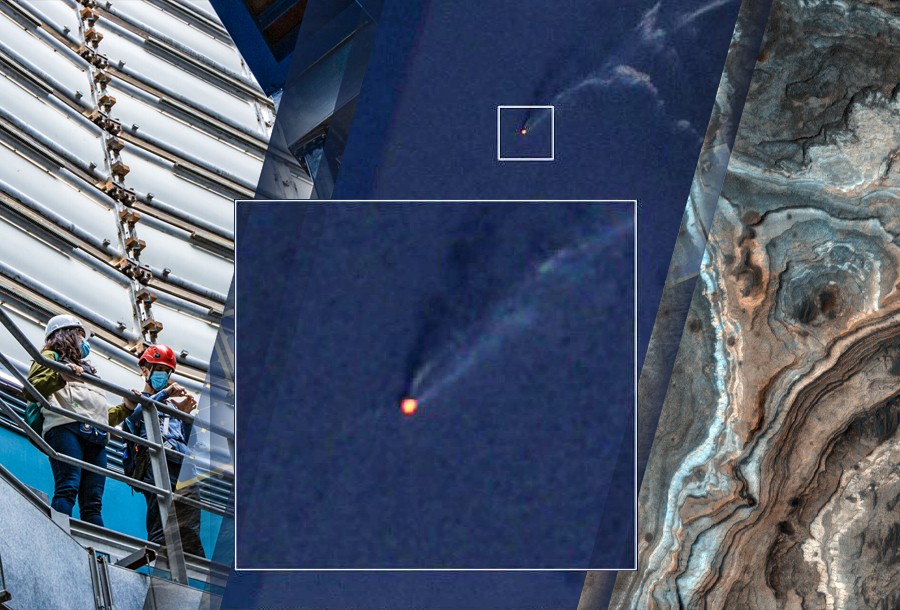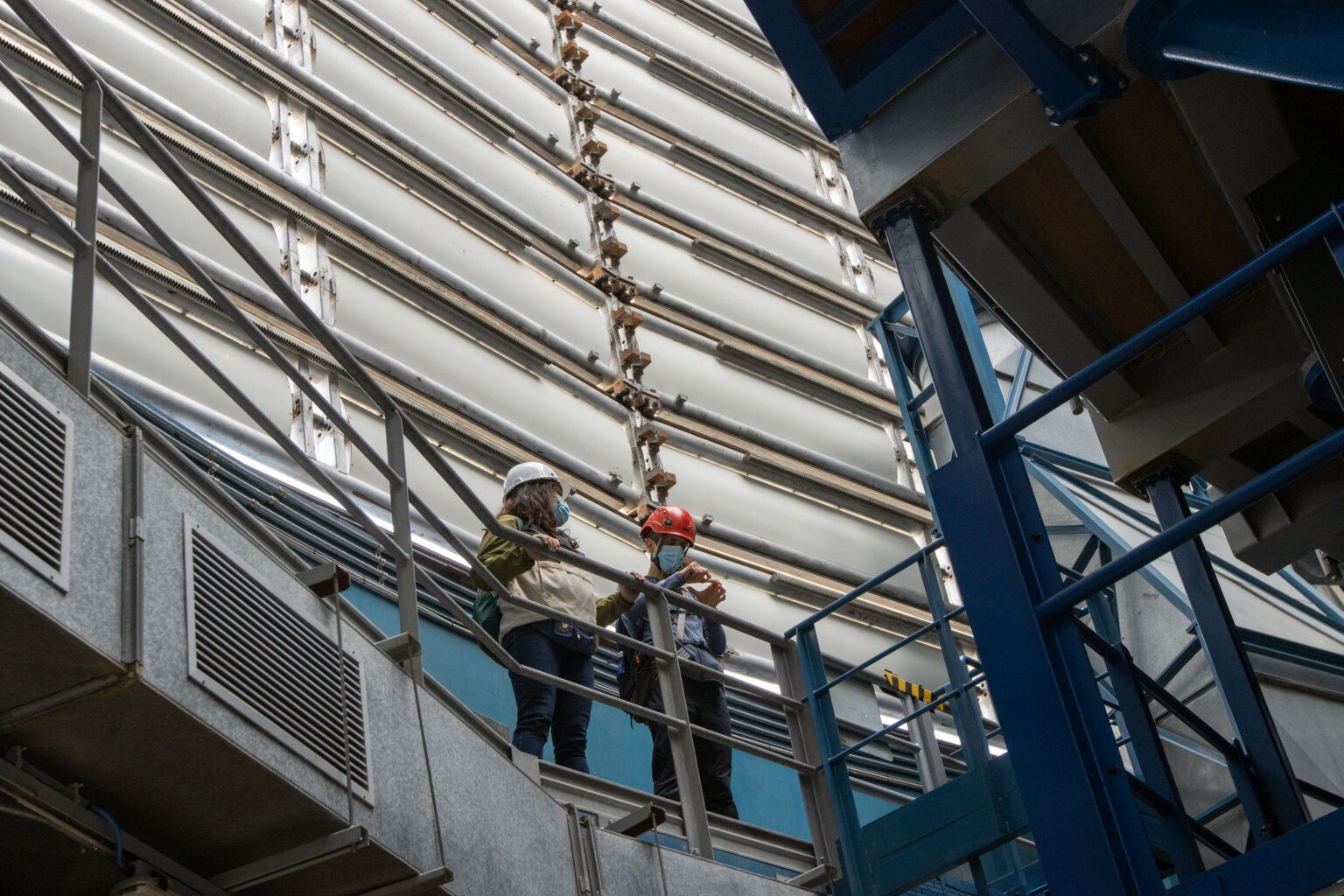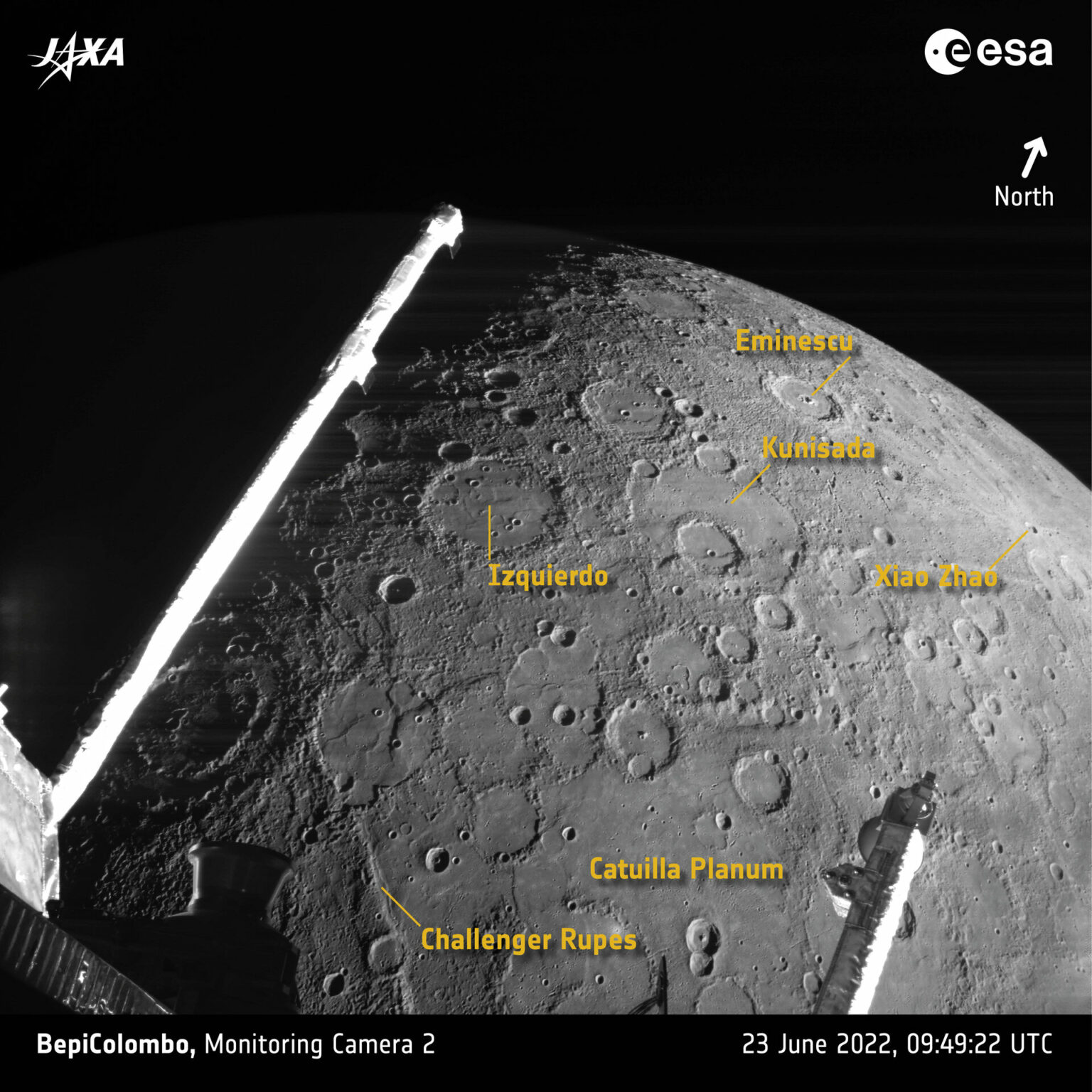Selection of the most interesting space news for the week: An astronomer made a video of a huge “shot” of plasma on the Sun at a height of 20 thousand km. Clay deposits testify to the suitability of ancient Mars for life, and we are talking about the largest release of energy in the neighboring Galaxy since the Big Bang.

Clay deposits prove the suitability of ancient Mars for life
Studies of the Ladon Valley on Pearl Land on Mars have allowed the discovery of significant deposits of clay-like materials. They were formed in the period from 3.8 to 2.5 billion years ago. This indicates the presence of liquid water currently. Scientists have found significant deposits of clay-like rocks on Mars. For this, they used data from the High Resolution Imaging Science Experiment (HiRISE), Context Camera (CTX) and Compact Reconnaissance Imaging Spectrometers for Mars (CRISM), which are located on the Mars Reconnaissance Orbiter spacecraft.
Fire on trapped drilling platforms in the Black Sea visible from space
Last week, a missile strike was carried out on the drilling platforms of Chernomorneftegaz trapped by the Russians. The enemy does not publish photos of the consequences. But satellite images of the American aerospace agency NASA show that a strong fire has formed on the drilling platforms.
Astronomer filmed an impressive video of a plasma “shot” on the Sun at an altitude of 20 thousand km
An amazing video of a giant swirling plasma vortex on the Sun was shot by amateur astronomer Apollo Laski. Mind-blowing footage shows a scalding hot solar tornado with a height of 20 thousand kilometers. The ejection is part of a solar storm system and would have been large enough to incinerate the Earth if our planet had been very close. Fortunately, the eruption was not directed towards the Earth. In fact, most of the plasma ejection fell back to the surface of the Sun. The rest of the solar matter, having gained sufficient kinetic energy, was thrown into space.
Market News

Shuttered in! Behind the high-tech VLT windscreens
The presented image was taken inside one of the towers of the ESO’s Very Large Telescope (VLT) — the largest optical observatory on Earth by total mirror area. The image shows a system of windscreens having a height of about half a meter. They play a vital role in the operation of VLT.
The towers and domes of the main telescopes of the VLT complex perform a key task in protecting their fillings from external factors: wind, rain, sand and dust. But these huge structures can create problems for astronomers. The air inside the towers can swirl, creating turbulent flows (vaguely similar to those that cause the plane to shake in flight). They, in turn, are able to blur the images they receive.
CAPSTONE: First step to the near-moon station
On June 27, a very remarkable launch is scheduled to take place from the New Zealand Mahia cosmodrome. The Electron rocket will send a CAPSTONE satellite to the moon. If successful, this mission will go down in history for several reasons at once. The main task of CAPSTONE is to test a Near-Rectilinear Halo Orbit, NRHO centered around the L2 Lagrange point of the Earth-Moon system. The device located on it will approach 3 thousand km to the south pole of the Moon in the pericenter, and in the apocenter it will move away from it by 70 thousand km.
James Webb helps clarify the number of galaxies in the Universe
The first device that helped to calculate at least an approximate number from a scientific point of view was the Hubble Space Telescope. In 1995, astronomers sent a cosmic eye to the empty area of the Ursa Major and collected light for ten days. The result was an image of about 3 thousand faint galaxies in one frame. This photo was named Hubble Deep Field and was the farthest that was ever seen in the Universe at that time.
In total, Hubble has discovered about 100 billion galaxies in the Universe. However, after James Webb is fully operational, this number will probably increase to 200 billion. Moreover, scientists are not sure that even 200 billion galaxies is the final figure.
Interesting

Photo of the day: Mercury via BepiColombo
The BepiColombo mission support group published the first image of Mercury obtained during the second flyby of the planet on June 23. The picture was taken by one of the device’s selfie cameras from a distance of 920 km.
Photo BepiColombo allows us to “touch” the rich geology of the first planet from the Sun. Numerous shock formations covering its surface can be seen on it. Among them are the 130-kilometer Eminescu crater, the 240-kilometer Kunisada crater, the 170-kilometer Izquierdo crater and the 24-kilometer Xiao Zhao crater. From the last, along the Mercurian surface, characteristic light rays stretched out, indicating its geological youth.
Samantha Cristoforetti cosplayed Sandra Bullock from “Gravity”
Italian astronaut Samantha Cristoforetti, who is on the ISS, posted a photo of her cosplay for “Gravity” on Twitter. In the photo, she recreated a scene from the movie in which Dr. Stone, played by Sandra Bullock, moves around the space station. As a visual reference point above the astronaut is a screen showing a similar frame from “Gravity”. Christoferetti accompanied the photo with the following caption: “Hey, Dr. Stone! Quick question for you. How did you make your hair stay combed?”.
The biggest Bang since the Big One (article)
The most powerful explosion known to mankind is, of course, the Big Bang, which resulted in the emergence of our universe. Approximate estimates of its capacity indicate that it could reach 1054 megatons in TNT equivalent.
The problem is that during this event, not only all the matter and energy of our world was formed, but also the space filled by them — and that space began to expand together with them. In order to adequately estimate the power of the Big Bang, it should be seen by an “outside observer” from a completely different spatial dimension. Unfortunately, it is impossible to get such information “from inside”.
Follow us on Twitter to get the most interesting space news in time
https://twitter.com/ust_magazine

